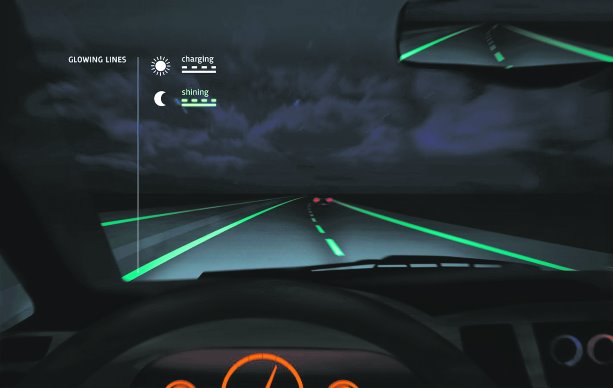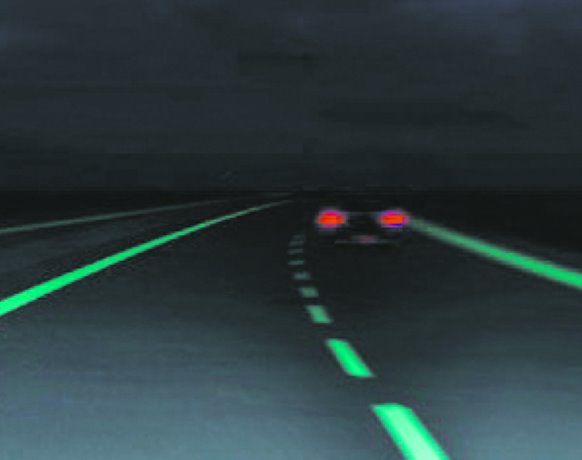European innovators are working to give their roads and pathways a certain glow to help vehicles, bicycles and people navigate more effectively by night.
In the Netherlands, collaboration between designer Daan Roosegaarde’s Studio Roosegaarde and Heijmans Infrastructure has resulted in a number of "Smart Highway" concepts that put the onus on road designers, not cars, to improve the driving experience.
Among them, Glowing Lines, the world’s first light-emitting highway project is billed as a safe and sustainable alternative to conventional lighting for dark roads.
The site of the pilot project is a section of the N329 Highway in Oss, located in the province of Noord-Brabant, the Netherlands.
The project was jointly funded by the municipality, the province and the Brabant Knowledge Centre for the Arts.
The road was constructed by Heijmans and the road markings were designed by Studio Roosegaarde, utilizing paint impregnated with light-emitting pigments.
The pigments absorb ultraviolet (UV) light during the day and release it for up to 10 hours at night.
Solar panels or other sources of power can provide a small energy boost to ensure the strips continue to provide light of the intensity and duration required, regardless of weather or available daylight hours.
The pilot project, dubbed Glowing Lines 1.0, involved two 500-metre strips of road completed for real-life testing on April 10, 2014.
Following several months of service, the project partners are regrouping for the next version of the product.
"We have seen that humidity due to great amounts of rain affects the continuity and intensity of the lining," said Marieke Swinkels-Verstappen, communications manager with Heijmans.
"We’ve temporarily faded out the lining to prevent any confusing situations for road users. As planned we are working on developing Glowing Lines version 2.0 in which this issue will be tackled. It will then be implemented in Oss, but also introduced on a larger scale in the Netherlands and abroad."
In the United Kingdom, Pro-Teq Surfacing UK Ltd. has launched Starpath, a liquid-based polyurethane resurfacing product that also stores ambient UV light by day.
However, by night it releases light across the entire surface area in a pattern resembling a field of stars.
The glowing aggregate material is spray-applied and currently being used primarily to resurface footpaths and bicycle paths.
"The product is based on one of our existing resurfacing products, which forms a waterproof elastomeric membrane into which any type of decorative stone or aggregate can be injected," said Neil Blackmore, sales director at Pro-Teq.
"Its physical properties had already been tested and proven before the addition of illumination. We didn’t realize Starpath would be such a big deal, but we’ve received interest worldwide."
Somewhat more costly than its non-glowing cousin, the Starpath product is offered as an added benefit to communities that are looking to remediate end-of-life asphalt or concrete paths.
"We developed the idea as a solution for U.K. city councils that have been turning off path lighting at night as a cost-saving measure," said Blackmore.
"When the path begins to emit ambient light, it’s easy to see the boundaries of the path and to see silhouettes of bikers or pedestrian who are approaching you."
Starpath was first put through its paces in 2013 in a trial at Christ’s Pieces, a park in the city of Cambridge on behalf of Cambridge City Council.
The 150-square-metre pathway was coated in 30 minutes using a four-person crew, and was ready for traffic four hours later.
The product has since found increased popularity in the U.K., even as Pro-Teq looks for partners in Canada, the U.S. and other countries to distribute Starpath on a broader scale.
Starpath has also been tested in vehicular roadway applications through private trials conducted by the company.
"The product can take it, but we haven’t yet had Starpath approved for roadway use," Blackmore said.








Recent Comments
comments for this post are closed